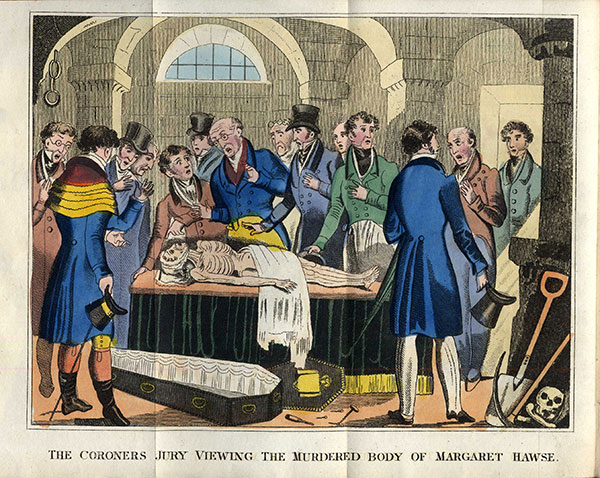KINDRED LINES: Morgue and coroners’ records
Published in 18th-19th Century Social Perspectives, 20th Century Social Perspectives, Features, Issue 6 (November/December 2018), Volume 26By Fiona Fitzsimons
The Public Health (Ireland) Act, 1878, gave power to local authorities to establish mortuaries, and authorised any justice to order the removal of dead bodies to a mortuary. Where death was sudden, violent or unexplained, the body could be brought to a morgue for post-mortem examination before burial. Depending on the result, the death might warrant further investigation by a coroner.
Morgue and coroners’ records are part of the ‘Crown and Peace’ collection held in the NAI. The earliest surviving run of records for the Coroner’s Court in Dublin City only starts in 1900, but the Morgue Register for Dublin City survives from 1871 and continues to 1970.
The Morgue Registers recorded the following information: admission of body (includes the date and the hour); name of the dead (where known); age; sex; late residence; where found (sometimes the only formal attestation of the deceased, particularly in the case of foundlings or homeless); by whom identified; description of remains (male/female, adult/infant); how disposed of (e.g. ‘buried from morgue/hospital’, ‘buried by friends/parents/sons’); property, if any (very often the only property was the clothes in which a person was found, and the coins in their pockets); coroner’s verdict and signature; signature of person to whom the remains or property has been delivered; where inquest was held (if in a place other than a morgue); and coroners’ remarks.
In the earlier records (1871–1900), how people died, and at what age, reflects how our society has changed. There is a high rate of death from domestic accidents, especially burns and scalds. This is not surprising when we consider that in the nineteenth century lighting in homes was provided by candles, oil-lamps and, by the last quarter in the towns and cities, gaslight, and heat by open fires or primitive stoves; likewise, for most of the nineteenth century cooking and laundry were done on an open hearth or kitchen range.
There are also a surprisingly high number of drownings. Some of these may be attributed to dire swimming skills. In the column for coroner’s remarks, there are many instances noted of ‘accidental drowning whilst bathing’. A closer examination shows that the greater number of drownings were of men working on ships and barges, or in the harbours and canal basins where they docked. The registers show a high rate of death from diseases against which we now vaccinate.

Above: ‘The coroner’s jury viewing the murdered body of Margaret Hawse’, from John Fairburn’s chap-book of 1829. (London Collection, Bishopsgate Institute)
Probably the most deplorable evidence in the registers concerns the number of infant deaths. Foundlings were abandoned in public and private gardens or on the streets, or fished out of the Liffey and canals. The coroner’s occasional remarks are brief and imply a resigned acceptance of an appalling situation: ‘died apparently from lack of care’. The 30 years of records under scrutiny correspond to a time when the care of orphaned or abandoned children was in the process of being transferred from the workhouses and channelled into private care (fostering) or institutional custody.
Fiona Fitzsimons is a director of Eneclann, a Trinity campus company, and of findmypast Ireland.
















